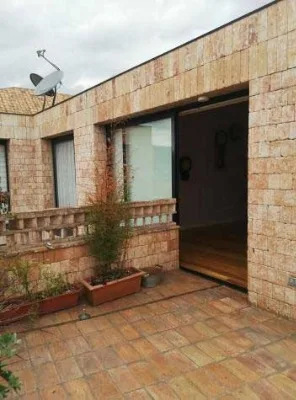Touring the Galapagos, Quito and the cloud forest in unconventional style offers unexpected results
By Neil Geraghty
When you’re a sea lion living in the Galapagos Islands, it’s important to keep cool during the heat of the day.
 I’m snorkeling along the cliffs of North Seymour Island, a low-lying lava outcrop that teams with colorful wildlife, but the fierce Equatorial sun is proving too much for the sea lions. I swim around a promontory and am startled to run into three adults floating vertically in the water with their tails poking up above the waves. They’re clearly enjoying the refreshing water, give me a disinterested look and refuse to budge. For a couple of juveniles however, my presence causes a flurry of excitement. Two of them dive into the water and begin darting and pirouetting around my legs. Plucking up courage, one of them swims within inches of my mask and stares at me with large, inquisitive eyes. It’s an enchanting moment and conjures up all the magic of these unique islands.
I’m snorkeling along the cliffs of North Seymour Island, a low-lying lava outcrop that teams with colorful wildlife, but the fierce Equatorial sun is proving too much for the sea lions. I swim around a promontory and am startled to run into three adults floating vertically in the water with their tails poking up above the waves. They’re clearly enjoying the refreshing water, give me a disinterested look and refuse to budge. For a couple of juveniles however, my presence causes a flurry of excitement. Two of them dive into the water and begin darting and pirouetting around my legs. Plucking up courage, one of them swims within inches of my mask and stares at me with large, inquisitive eyes. It’s an enchanting moment and conjures up all the magic of these unique islands.

Land tours of the Galapagos provide an up-close and personal look at the wildlife of the islands.
Most overseas tourists visiting the Galapagos opt for cruises but for landlubbers a new safari offers visitors the chance to fully immerse themselves in the islands’ dramatic landscapes and wildlife.
The safari gets off to a thrilling start. After clearing customs at the main airport on Baltra Island, I’m whisked across the Tarmac to board a tiny twin prop airplane and have the honor of sitting next to the pilot. With just 10 seats, only 1,000 passengers a year make the 40-minute inter-island flight which offers superb views of the majestic volcanic landscapes. Coasting along over the bumpy tropical thermals, I’m surprised at the size of the Galapagos. The largest island Isabela is over 60 miles long and comprises six dramatic interlocking shield volcanoes. During our descent we skim over russet colored frozen lava fields flowing down to opalescent lagoons fringed by lush mangrove forests.
At Isabela’s tiny air strip, I’m picked up by a 4×4 truck from Scalesia Lodge which is set amidst a forest on the upper slopes of Isabela’s largest volcano, the Sierra Negra. The lodge consists of comfortable safari style tents placed on stilts with spacious verandahs from which you can enjoy close up views of Galapagos’ world-famous birdlife.

A view of the vast crater on Santa Isabela Island.
I wake up during the dawn chorus, grab a pair of binoculars, but hardly need them. On the verandah I’m greeted by a cacophony of Darwin finches and bright yellow warblers squabbling in the nearby treetops. After breakfast I join Tamara, a local guide for a hike to the 1,100 metre summit of Sierra Negra. The ascent is a leisurely one hour ramble along well maintained paths lined by honey scented guava trees. Every now and again vistas open up of rounded hills sweeping down to the distant sea, a landscape strangely reminiscent of the Southern Uplands. When we reach the crater, all similarities to Scotland disappear. At 10km wide, the crater is one of the largest on earth and is filled with a barren expanse of splintered petrified lava that resembles a giant chocolate cake burnt to a cinder.
The following afternoon I head down to the laid-back surfing town of Puerto Villamil to go cycling along the beautiful coastline. A well-maintained gravel path weaves through mangrove forests and placid lagoons where marine iguanas laze around on black volcanic beaches. Halfway through the ride Tamara grinds to a halt and points to the side of the road where a giant tortoise is happily munching tiny pale green beach apples fallen from a nearby manchineel tree. The apples fill the air with a sweet appetising aroma but travelers beware, the apples are deadly poisonous to humans and in Spanish are known as “the little apples of death”.
After a week exploring the Galapagos, I fly to Quito, one of the world’s highest capital cities where the cool mountain air makes a refreshing contrast to the sultry heat of the islands. Although a major city of 2.5 million people, Quito is strung out along a 50km river valley and each neighborhood has a distinctly small-town feel. I check into the Casa Cangontena, a graceful colonial style hotel located on Plaza San Francisco in the heart of Quito’s historic old city.

Quito’s well-preserved colonial plazas offer tourists a step back in time.
The streets behind the hotel are home to fascinating markets and traditional shops and in the morning, I join Patricia Pavon, a local market stall holder for a tour of the neighborhood.
Our first stop is at a wood carver, Gonzalo Carron, whose family has restored figurines of Baby Jesus for generations. These statuettes are prized heirlooms in Ecuador and are traditionally dressed in outfits matching the owners’ professions.
From under the counter he takes two recently completed restorations – one dressed as a police officer and the other as a nurse. He also has a busy sideline in healing cuts and grazes.
Traditional medicine is popular in Ecuador and in the market, I’ve already seen mothers with babies queuing up for indigenous cleansing rituals in which shamans brush the babies’ bodies with bouquets of aromatic herbs and flowers. A mother walks into Gonzalo’s shop with her son who has tripped over and grazed his forehead. Gonzalo pours a mysterious potion onto a palette, adds some pigmentation and deftly paints it onto the wound. I ask him what the ingredients are, but with a wink he smiles and says it’s a secret recipe.
From Quito I take a winding mountain road along the Pacific facing side of the Andes, where, in the middle of a cloud forest, the luxurious Mashpi Lodge, which recently featured in the BBC’s Amazing Hotels: Life Beyond the Lobby series, attracts bird watchers from around the world.

The cloud forest near the Mashpi lodge is a birdwatcher’s paradise.
Profits from Mashpi finance important environmental research projects and in recent months, several new species including a frog and a magnolia have been discovered.
After lunch I join a group of British bird watchers in the hummingbird garden where rangers fill feeders shaped like Chinese lanterns with sugar water. With a deep pitched whir, a green crowned brilliant hummingbird appears, quickly followed by a velvet purple coronet. They are two of the largest hummingbirds and both have gorgeous iridescent plumage. With flashes of emerald, sapphire and amethyst they begin squabbling and as they fight a tiny bumble bee hummingbird appears, takes his chances, and beats both of them to the feeder.
The following afternoon I head to the treetops for a ride on Mashpi’s sky bike, a recumbent two-seater bicycle that hangs beneath a 200 metre long cable suspended over a dramatic river gorge. Not for the faint hearted, the bike ride takes you through the forest canopy where brightly colored bromeliads and orchids hang from the branches. Halfway across I pluck up enough courage to look down at the dizzying view of rapids cascading over boulders. Suddenly an electric blue flash appears on one side of the riverbank followed by another on the other side. They’re morpho butterflies, one of the most colorful species in South America and I watch spellbound as they flutter slowly along the riverbank before disappearing into the luxuriant undergrowth.
_____________________
Neil Geraghty is a Scottish travel writer.


















